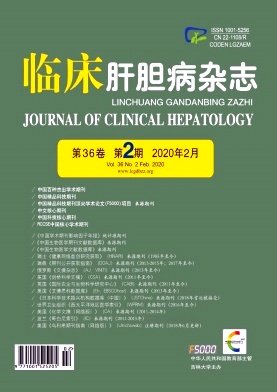|
[1] REID MD,BALCI S,SAKA B,et al. Neuroendocrine tumors of the pancreas:Current concepts and controversies[J]. Endocr Pathol,2014,25(1):65-79.
|
|
[2] SUN HT,ZHANG SL,LIU K,et al. MRI-based nomogram estimates the risk of recurrence of primary nonmetastatic pancreatic neuroendocrine tumors after curative resection[J]. J Magn Reson Imaging,2019,50(2):397-409.
|
|
[3] BASHIR MR,GUPTA RT. MDCT evaluation of the pancreas:Nuts and bolts[J]. Radiol Clin North Am,2012,50(3):365-377.
|
|
[4] BOSMAN FT,CARNEIRO F,HRUBAN RH,et al. WHO classification of tumors of the digestive system[M]. 4th edition. Lyon:International Agency for Research on Cancer,2010.
|
|
[5] BRIERLEY JD,GOSPODAROWICZ K,WITTEKIND C,et al.TNM classification of malignant tumors[M]. 8th edition. UK:Wiley Blackwell,2017.
|
|
[6] ZHANG TP,QIU JD,FENG MY,et al. Progress and controversy on the treatment of incidental non-functioning pancreatic neuroendocrine tumors[J]. Chin J Dig Surg,2018,17(7):666-670.(in Chinese)张太平,邱江东,冯梦宇,等.偶发无功能胰腺神经内分泌肿瘤的治疗进展与争议[J].中华消化外科杂志,2018,17(7):666-670.
|
|
[7] DE ROBERTIS R,CINGARLINI S,TINAZZI MARTINI P,et al.Pancreatic neuroendocrine neoplasms:Magnetic resonance imaging features according to grade and stage[J]. World J Gastroenterol,2017,23(2):275-285.
|
|
[8] GUO CG,REN S,CHEN X,et al. Pancreatic neuroendocrine tumor:Prediction of the tumor grade using magnetic resonance imaging findings and texture analysis with 3-T magnetic resonance[J]. Cancer Manag Res,2019,11:1933-1944.
|
|
[9] KIM DW,KIM HJ,KIM KW,et al. Neuroendocrine neoplasms of the pancreas at dynamic enhanced CT:Comparison between grade 3 neuroendocrine carcinoma and grade 1/2 neuroendocrine tumour[J]. Eur Radiol,2015,25(5):1375-1383.
|
|
[10] KIM JH,EUN HW,KIM YJ,et al. Pancreatic neuroendocrine tumour(PNET):Staging accuracy of MDCT and its diagnostic performance for the differentiation of PNET with uncommon CT findings from pancreatic adenocarcinoma[J]. Eur Radiol,2016,26(5):1338-1347.
|
|
[11] CANELLAS R,LO G,BHOWMIK S,et al. Pancreatic neuroendocrine tumor:Correlations between MRI features,tumor biology,and clinical outcome after surgery[J]. J Magn Reson Imaging,2018,47(2):425-432.
|
|
[12] ZHAO XD,TIAN XD,YANG YM. Diagnosis and surgical treatment of pancreatic neuroendocrine neoplasms[J]. Chin J Hepatobiliary Surg,2017,23(8):505-508.(in Chinese)赵旭东,田孝东,杨尹默.胰腺神经内分泌肿瘤的诊断与外科治疗[J].中华肝胆外科杂志,2017,23(8):505-508.
|
|
[13] YANG M,ZHANG Y,ZENG L,et al. Prognostic validity of the American Joint Committee on Cancer eighth edition TNM staging system for surgically treated and well-differentiated pancreatic neuroendocrine tumors:A comprehensive analysis of254 consecutive patients from a large Chinese institution[J].Pancreas,2019,48(5):613-621.
|
|
[14] PAVEL M,O’TOOLE D,COSTA F,et al. ENETS consensus guidelines update for the management of distant metastatic disease of intestinal,pancreatic,bronchial neuroendocrine neoplasms(NEN)and NEN of unknown primary site[J]. Neuroendocrinology,2016,103(2):172-185.
|
|
[15] YAO JC,PAVEL M,LOMBARD-BOHAS C,et al. Everolimus for the treatment of advanced pancreatic neuroendocrine tumors:Overall survival and circulating biomarkers from the randomized,phase III RADIANT-3 study[J]. J Clin Oncol,2016,34(32):3906-3913.
|
|
[16] FAIVRE S,NICCOLI P,CASTELLANO D,et al. Sunitinib in pancreatic neuroendocrine tumors:Updated progressionfree survival and final overall survival from a phase III randomized study[J]. Ann Oncol,2017,28(2):339-343.
|
|
[17] IMHOF A,BRUNNER P,MARINCEK N,et al. Response,survival,and long-term toxicity after therapy with the radiolabeled somatostatin analogue[90Y-DOTA]-TOC in metastasized neuroendocrine cancers[J]. J Clin Oncol,2011,29(17):2416-2423.
|
|
[18] LUO Q,LIU YN,MA HY,et al. Analysis of diagnosis,therapy and prognosis factors of 103 patients with pancreatic neuroendocrine tumors[J]. Chin J Surg,2017,55(10):755-759.(in Chinese)罗乔,刘艳楠,马洪运,等.胰腺神经内分泌肿瘤103例诊治经验及预后因素分析[J].中华外科杂志,2017,55(10):755-759.
|
|
[19] SHEN C,DASARI A,CHU Y,et al. Clinical,pathological,and demographic factors associated with development of recurrences after surgical resection in elderly patients with neuroendocrine tumors[J]. Ann Oncol,2017,28(7):1582-1589.
|
|
[20] YANG M,TIAN B,ZHANG Y,et al. Epidemiology,diagnosis,surgical treatment and prognosis of the pancreatic neuroendocrine tumors:Report of 125 patients from one single center[J]. Indian J Cancer,2015,52(3):343-349.
|
|
[21] ZHANG P,LI YL,QIU XD,et al. Clinicopathological characteristics and risk factors for recurrence of wel-differentiated pancreatic neuroendocrine tumors after radical surgery:A case-control study[J]. World J Surg Oncol,2019,17(1):66.
|
|
[22] BALLIAN N,LOEFFLER AG,RAJAMANICKAM V,et al. A simplified prognostic system for resected pancreatic neuroendocrine neoplasms[J]. HPB(Oxford),2009,11(5):422-428.
|
|
[23] FISHER AV,LOPEZ-AGUIAR AG,RENDELL VR,et al. Predictive value of chromogranin A and a pre-operative risk score to predict recurrence after resection of pancreatic neuroendocrine tumors[J]. J Gastrointest Surg,2019,23(4):651-658.
|














 DownLoad:
DownLoad: